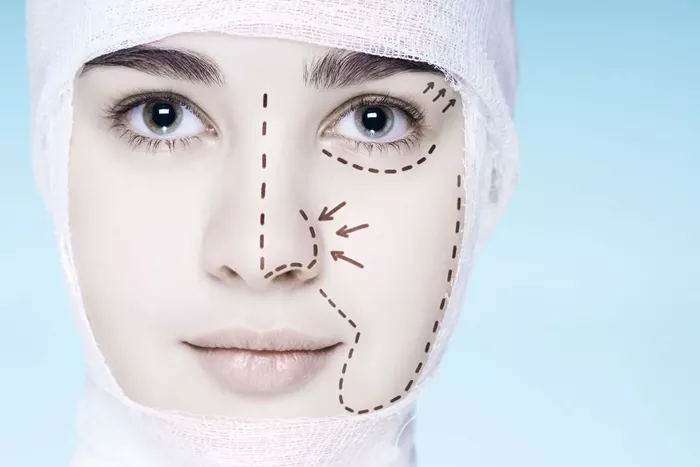Scars are not just physical marks; they can also be psychological reminders of injury, surgery, or disease. The quest to remove or reduce the appearance of scars has led many individuals to explore various medical treatments, including plastic surgery. Plastic surgery offers a range of techniques for scar revision, aimed at improving the appearance of scars and, consequently, the quality of life of those affected by them. This comprehensive article will explore the possibilities and limitations of scar removal through plastic surgery, including the types of scars, the techniques used for scar revision, expected outcomes, and patient considerations.
Understanding Scars and Their Formation
Before delving into the specifics of plastic surgery for scar removal, it is essential to understand what scars are and how they form. A scar results from the biological process of wound repair in the skin and other tissues. When the skin is injured, the body forms new collagen fibers to mend the damage, resulting in a scar. The appearance of a scar can vary widely, depending on factors such as the depth and size of the wound, the location, and the individual’s age, skin type, and overall health.
Types of ScarsThere are several types of scars, each with unique characteristics that influence the approach to treatment:
Keloid Scars: These are raised, dark-colored lesions that can expand beyond the boundaries of the original injury. Keloid scars are more common in individuals with darker skin tones.
Hypertrophic Scars: Similar to keloid scars, these are raised but remain within the limits of the original wound. They might reduce in size over time.
Atrophic Scars: These appear sunken or depressed due to the loss of muscle or fat beneath the skin. They are often associated with acne or chickenpox.
Contracture Scars: Resulting from burns, these scars tighten the skin, potentially impairing the ability to move and affecting muscles and nerves.
Scar Formation and Healing: The healing process is also a critical determinant of how a scar will look. It involves several phases: hemostasis, inflammation, proliferation, and remodeling. The duration and intensity of these phases affect the scar’s ultimate appearance.
Plastic Surgery Techniques for Scar Revision
Plastic surgery can offer several techniques for improving or minimizing the appearance of scars. The choice of technique generally depends on the type and severity of the scar, as well as the individual’s skin type and overall health.
Topical Treatments: While not surgical, topical treatments like silicone sheets and gels are often used in conjunction with surgery to improve outcomes. They are typically used to reduce scar formation after surgery and to treat existing small, less severe scars.
Injection Procedures: For some scar types, especially hypertrophic scars and keloids, steroid injections can be used to reduce size, itching, and redness.
Surface Treatments: This category includes dermabrasion, chemical peels, and laser therapy, which are used to reduce the surface roughness of scars and improve their texture and appearance.
Excision: Scar excision is a method where the scar is surgically removed, and the skin is closed with tiny stitches, often resulting in a less noticeable scar.
Skin Grafts and Flap Surgery: In cases of large scars, such as those from burns, skin grafts (transplanting skin from one area of the body to another) or flap surgery (moving skin along with its underlying fat, blood vessels, and sometimes muscle from one part of the body to another) may be necessary.
Expectations and Outcomes
Realistic Expectations: It’s vital for patients to have realistic expectations. Complete scar removal is not always possible. The primary goal of scar revision surgery is to improve the appearance of the scar, making it less conspicuous and blending in more with the surrounding skin tone and texture.
Potential Outcomes: The outcomes of scar revision surgery vary depending on the scar’s nature and the chosen surgical technique. Most patients see a significant improvement in the appearance of their scars, although a completely invisible scar is not guaranteed.
Patient Considerations and Recovery
Choosing the Right Surgeon: Selecting a qualified plastic surgeon is crucial. The surgeon’s experience in scar revision and their understanding of the complexities associated with different scar types will significantly influence the surgery’s success.
Pre-surgical Consultation: During the consultation, the surgeon will evaluate the scar, discuss the possible techniques, and explain realistic outcomes. This is also the time for patients to discuss their expectations and any concerns they might have.
Post-surgical Care: Proper care after surgery can influence the healing process and the appearance of the scar. This may include wound care, avoiding sun exposure, and following the surgeon’s instructions for activities.
Long-term Care and Additional Treatments: Some scars might require more than one procedure, and additional treatments may be necessary to achieve the desired outcome. It’s important for patients to be prepared for ongoing care and possibly long-term follow-up.
Conclusion
Plastic surgery can be an effective option for improving or minimizing the appearance of scars, enhancing not only the physical look but also the psychological well-being of individuals affected by scars. While it offers significant improvements, it is crucial for individuals considering this option to have realistic expectations and understand that completely removing a scar might not be feasible. The advancements in surgical techniques and a better understanding of the healing processes have significantly increased the success rates of scar treatments. As with any medical procedure, consulting with experienced professionals and weighing all options and potential outcomes is essential for achieving the best results.
In sum, while scar revision surgery can be transformative, it is a complex process that requires careful consideration and expert care to optimize outcomes and patient satisfaction.
[inline_related_posts title=”You Might Be Interested In” title_align=”left” style=”list” number=”6″ align=”none” ids=”8023,7967,7907″ by=”categories” orderby=”rand” order=”DESC” hide_thumb=”no” thumb_right=”no” views=”no” date=”yes” grid_columns=”2″ post_type=”” tax=””]
































